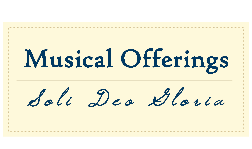Publication Date
4-18-2019
Document Type
Article
Keywords
C. P. E. Bach, Carl Philipp Emanuel Bach, Empfindsamkeit, Empfindsamer Stil, Sturm und Drang, Pre-Romanticism, Beethoven, sentiment, piano sonatas
Abstract
Up until recently, many musicologists perceived music history through the lens of what is known as the “linear view.” This is the idea that one “musical period” seamlessly gave way to another, with brief transitionary periods to bridge the gaps. As a result, composers were expected to fall neatly into categories depending on their chronological placement. For this reason, Carl Philipp Emanuel Bach, the eldest son of J. S. Bach, was (and still is) regarded as merely the bridge between the late Baroque style and that of the Viennese Classicists. In the past half-century, however, scholars have begun to study Emanuel Bach in his own right, giving an honest look at his works without imposing any preconceived notions on them. These scholars became captivated with the “pre-Romantic” aspects of his style, especially in the genre he advocated known as empfindsamer stil, or “sensitive style.” These new insights into Emanuel Bach and other composers who are “ahead of their time” have had a profound influence on musicologists, leading some, such as James Webster, to question the over-simplistic “linear view” of music history. This paper explores the idea of Emanuel Bach and his empfindsamer stil as pre-Romantic. The results of this study will show that “pre-Romantic” is indeed an appropriate way to describe Emanuel Bach’s empfindsamer stil for three reasons: first, it was driven by the same philosophical ideals as Romanticism; second, it is closely associated with another pre-Romantic movement in literature and song known as Sturm und Drang; and finally, several specific elements in Emanuel Bach’s music prefigure the pre-Romantic “innovations” of Beethoven.
Volume
10
Issue
1
Article Number
3
DOI
10.15385/jmo.2019.10.1.3
Recommended Citation
Dellaperute, Tyler
(2019)
"Emanuel Bach: A Composer ahead of His Time,"
Musical Offerings: Vol. 10:
No.
1, Article 3.
DOI: 10.15385/jmo.2019.10.1.3
Available at:
https://digitalcommons.cedarville.edu/musicalofferings/vol10/iss1/3
Creative Commons License

This work is licensed under a Creative Commons Attribution-Noncommercial-No Derivative Works 4.0 License.
Disclaimer
The CedarCommons repository provides a publication platform for fully open access journals, which means that all articles are available on the Internet to all users immediately upon publication. However, the opinions and sentiments expressed by the authors of articles published in our journals do not necessarily indicate the endorsement or reflect the views of Digital Services, the Centennial Library, or Cedarville University and its employees. The authors are solely responsible for the content of their work. Please address questions to the Digital Services staff.
Copyright
© 2019 Tyler Dellaperute. All rights reserved.

